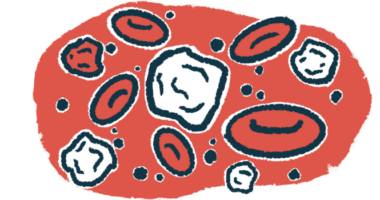New clinical trials test NKX019 cell therapy in autoimmune diseases
Higher dose now being tested in AAV and other autoimmune disorders

Two Phase 1/2 clinical trials testing NKX019 — Nkarta’s cell therapy candidate — are now enrolling participants to test a second, higher dose in people with ANCA-associated vasculitis (AAV) and other autoimmune conditions.
The Ntrust-2 study (NCT06733935) is enrolling up to 144 people with AAV, idiopathic inflammatory myopathy, or systemic sclerosis (SSc). The Ntrust-1 trial (NCT06557265) is testing NKX019 in people with autoimmune disorders affecting the kidneys, including lupus nephritis and primary membranous nephropathy.
Both studies are recruiting up to 12 participants per dose level per disease at several sites across the U.S. and Puerto Rico.
“This quarter [July to September] marks an important milestone for Nkarta as we advance the NKX019 clinical program to treat autoimmune diseases,” Paul J. Hastings, CEO of Nkarta, said in a company press release.
Safety board clears trials to begin testing higher NKX019 dose
Clearance to test a second dose in the studies’ initial, dose-escalation portion was granted by a combined independent Data Safety Monitoring Board (iDSMB), a group of experts that analyzes clinical trial data to ensure participant safety and the validity of the study. After assessing data from participants treated with the first, lower dose, the iDSMB determined it was safe to move forward with a higher dose.
The iDSMB has also simplified the enrollment process in both trials, as it allows a combined analysis from both studies to inform dose escalation decisions. Furthermore, after discussions with the U.S. Food and Drug Administration (FDA), the trials’ protocol now permits dosing multiple participants at the same time within each dose group — a change expected to speed up trial progress.
“Following productive engagement with the FDA, we streamlined enrollment across our Ntrust-1 and Ntrust-2 clinical trials under a combined iDSMB, which has authorized initiation of the second dose-escalation [group],” Hastings said. “This unified approach, combined with the ability to dose multiple patients simultaneously at each dose level … strengthens the efficiency of our trial enrollment and underscores the consistency of NKX019’s emerging safety profile.”
Early trial data for NKX019 in several autoimmune indications are expected to be presented next year at a medical conference.
How NKX019 is designed to target harmful B-cells in AAV
AAV is an autoimmune disease marked by inflammation and damage to small blood vessels. It is typically caused by self-reactive antibodies, called ANCAs, which are produced by immune B-cells.
NKX019 uses modified natural killer (NK) cells, another type of immune cell, to target and eliminate B-cells. The NK cells are collected from healthy donors and modified in the lab to target CD19 — a protein present at the surface of B-cells — and contain IL-15, a molecule that’s expected to increase the cells’ survival and activity.
These modified cells are grown to large numbers and stored so they can be used as an “off-the-shelf” therapy, given by infusion as needed. NKX019 is expected to lower the production of self-reactive antibodies and ease AAV symptoms.
Laboratory studies using blood samples from individuals with several autoimmune diseases demonstrated NKX019 consistently reduced B-cell levels.
In the Ntrust-2 trial, which began enrolling patients late last year, eligible participants are adults, ages 18-70. The AAV group includes people with hard-to-treat granulomatosis with polyangiitis or microscopic polyangiitis — the two most common types of AAV — who test positive for ANCAs against either the PR3 or MPO enzymes.
In the trial’s first part, increasing doses of NKX019 are being tested to identify the optimal dosage to be evaluated in a larger group of participants in the study’s second phase.
Before receiving NKX019, participants first receive a lymphodepletion regimen with the chemotherapy agents fludarabine and cyclophosphamide. This is done to kill B-cells and other immune cells, making room for the modified NK cells. Cyclophosphamide alone may be given to patients with low levels of blood cells before treatment.
This unified approach, combined with the ability to dose multiple patients simultaneously at each dose level … strengthens the efficiency of our trial enrollment and underscores the consistency of NKX019’s emerging safety profile.
“With the modification of our lymphodepletion regimen to include both fludarabine and cyclophosphamide prior to treatment with NKX019, we are now seeing complete B-cell depletion in all patients treated to date, compared with partial B-cell depletion observed with patients receiving cyclophosphamide alone,” Hastings said.
After the lymphodepletion regimen, participants receive a three-dose cycle of NKX019 on days zero, three, and seven. No additional immunotherapies will be given, allowing NKX019 to be evaluated as a single agent and helping speed the path toward potential regulatory approval, according to the company.
Ntrust-2’s main goal is to assess the treatment’s safety and tolerability. Secondary goals include evaluating whether NKX019 can support durable disease remission and reduce disease activity, as measured with the validated Birmingham Vasculitis Activity Score, after up to two years.
Investigator-initiated Phase 1 trials are also assessing NKX019 in people with other autoimmune diseases, including systemic lupus erythematosus and myasthenia gravis.







